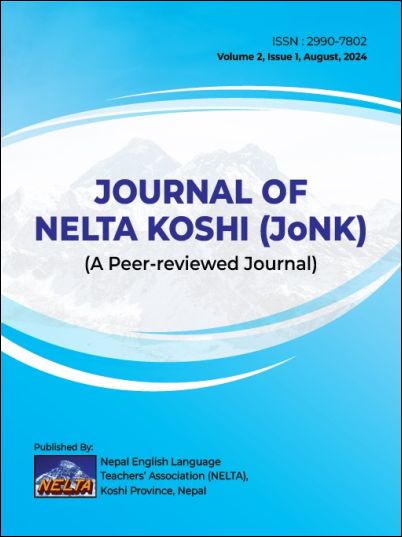Translanguaging Dynamics in Non-Native English Classrooms
DOI:
https://doi.org/10.3126/jonk.v2i1.69659Keywords:
Code-Switching/Mixing, translanguaging, English language teaching, sociolinguisticAbstract
This research investigates the pragmatic applications of code-switching employed by English language instructors in the pedagogical context, aiming to discern its role during interactions within the English teaching and learning process. The study, conducted in Lalitpur across three educational institutions, observed over 15 classes taught by five different educators. Utilizing interpretive ethnography within a qualitative research paradigm, the methodological framework involved meticulous observation, audio-visual recordings, and subsequent transcription for data collection and analysis. The findings revealed that code-switching in the English as a Foreign Language (EFL) classroom serves as a facilitative tool for enhancing interactions during the learning process. The identified purposes of code-switching by teachers during instructional activities include clarification, reiteration, explanation, inquiry, translation, assessment of comprehension, emphasis on linguistic elements, inferential communication, vocabulary development, facilitation of class discussions, provision of feedback, support for memorization, classroom management, and entertainment.
Downloads
Downloads
Published
How to Cite
Issue
Section
License
Copyright (c) 2024 NELTA Koshi Province, Nepal

This work is licensed under a Creative Commons Attribution-NonCommercial 4.0 International License.
This license enables reusers to distribute, remix, adapt, and build upon the material in any medium or format for noncommercial purposes only, and only so long as attribution is given to the creator.




